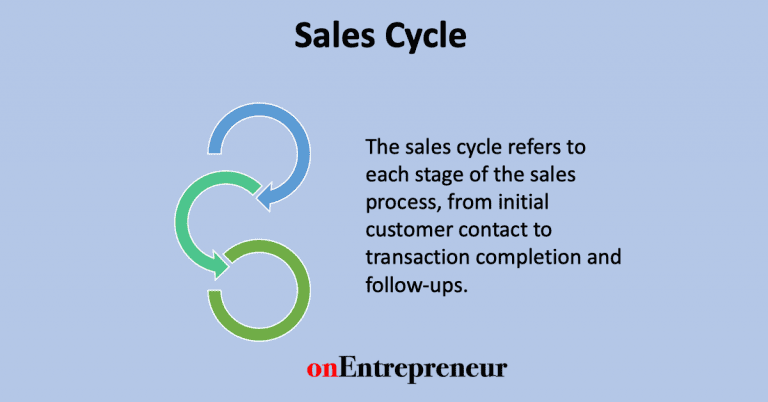Every business aims to sell its products or services to customers. To do this effectively, companies must guide potential buyers through each stage of the sales cycle, from initial contact to final purchase and beyond. Understanding and optimizing this process is crucial for sales success.
What is a Sales Cycle?
The sales cycle refers to each stage of the sales process, from initial customer contact to transaction completion and follow-ups. It’s the process a potential customer goes through from realizing they need a product to actually making a purchase.
Sales cycles vary depending on your industry, the cost of your products or services, and your average customer. However, it essentially boils down to this: The cycle begins when your business first contacts a customer and ends when the customer buys something from your business.
If you execute your sales process correctly, you remove doubt from customers’ minds and persuade them to buy your products and services. If you misfire during any stage of the sales cycle, you can send customers running into the arms of your competitors.
Different Stages of a Sales Cycle
1. Initiate Relationships with Prospects
The first step is initiating contact and building rapport with potential new customers. This lays the foundation for future sales conversations.
For example, a software company may connect with prospects at industry conferences or through cold calls and emails. The sales rep introduces themselves, provides a high-level overview of their solutions, and aims to learn about the prospect’s business challenges. The goal is to start a two-way dialogue and relationship.
With complex or expensive products, this relationship-building may take weeks or months before customers are ready to discuss specifics. With smaller purchases, the prospect may be ready to buy much sooner. The key is not rushing the rapport-building phase.
2. Uncover the Customer’s Needs
Next, sales reps must dig deeper into the potential customer’s needs and pain points. The rep asks questions, actively listens, and seeks to truly understand the prospect’s situation.
For instance, an enterprise software seller may conduct thorough interviews with various stakeholders to map out the client’s workflows, challenges, and goals. This allows them to create a customized solution.
Discovering budget limitations early can prevent wasted effort on accounts unlikely to be purchased. However, some reps prefer waiting until they possess a fuller understanding of needs before discussing cost.
3. Present the Sales Pitch
Equipped with an understanding of the customer’s needs, the sales rep can now tailor their pitch accordingly. They present exactly how their offering solves the prospect’s pain points.
For example, a solar panel installer can use energy consumption data to show how their specific system configuration and financing options would benefit that household or business. Test drives, free trials, or product demos help bring the benefits to life.
4. Address Concerns and Negotiate
Prospects often have lingering questions, objections, or desired negotiation on price or contract terms. Skilled reps listen to these concerns and address them methodically.
For instance, an FAQ section on a website can proactively answer common questions about costs, features, or functionality. Reps prepare rebuttals to concerns like “it costs too much” by emphasizing long-term return on investment.
When possible, sales reps accommodate reasonable requests to close the deal, like throwing in additional services for free. But they hold firm on core aspects like prices of major products.
5. Close the Sale
With concerns allayed and the prospect convinced of the value proposition, the sales rep asks for the customer’s business. Phrases like “Are you ready to move forward with this?” or “Let’s sign the agreement today” nudge the prospect to finalize the purchase.
Of course, not every sales cycle ends in a closed deal – even situations that seem promising sometimes result in a “no”. But following each stage properly improves the odds of success.
6. Post-Sales Account Management
Even after closing, the job isn’t done. Proper follow-up and account management help maximize the value of new clients.
For example, the sales team can collaborate with customer support to ensure a smooth transition and onboarding. Checking in quarterly uncovers expansion opportunities or areas for improvement. Efforts to delight the customer can pay off with referrals and renewed contracts down the road.
In summary, optimizing each step of the sales cycle funnel – from initial outreach to post-sale account management – is crucial for converting more prospects into satisfied, long-term customers.



